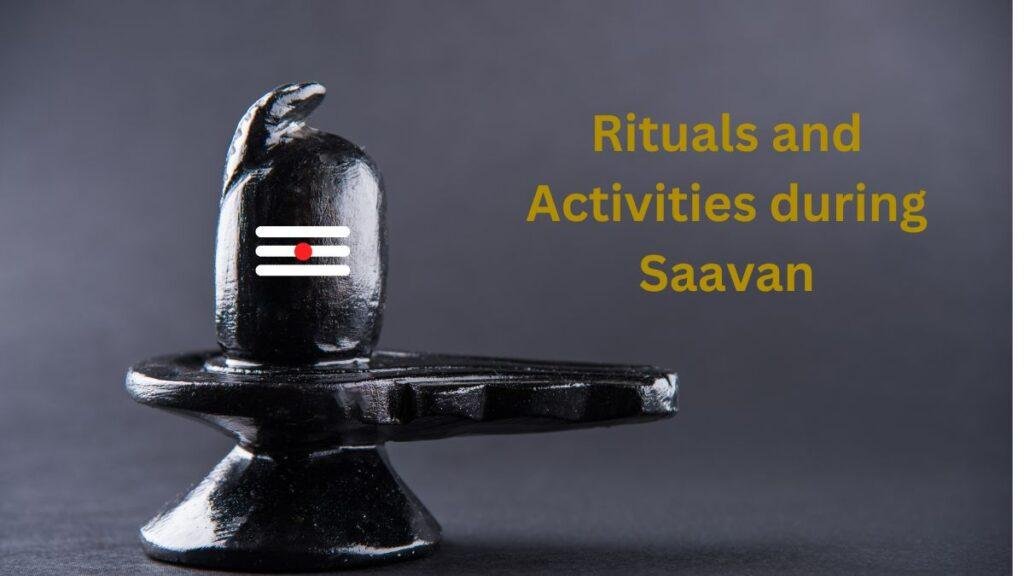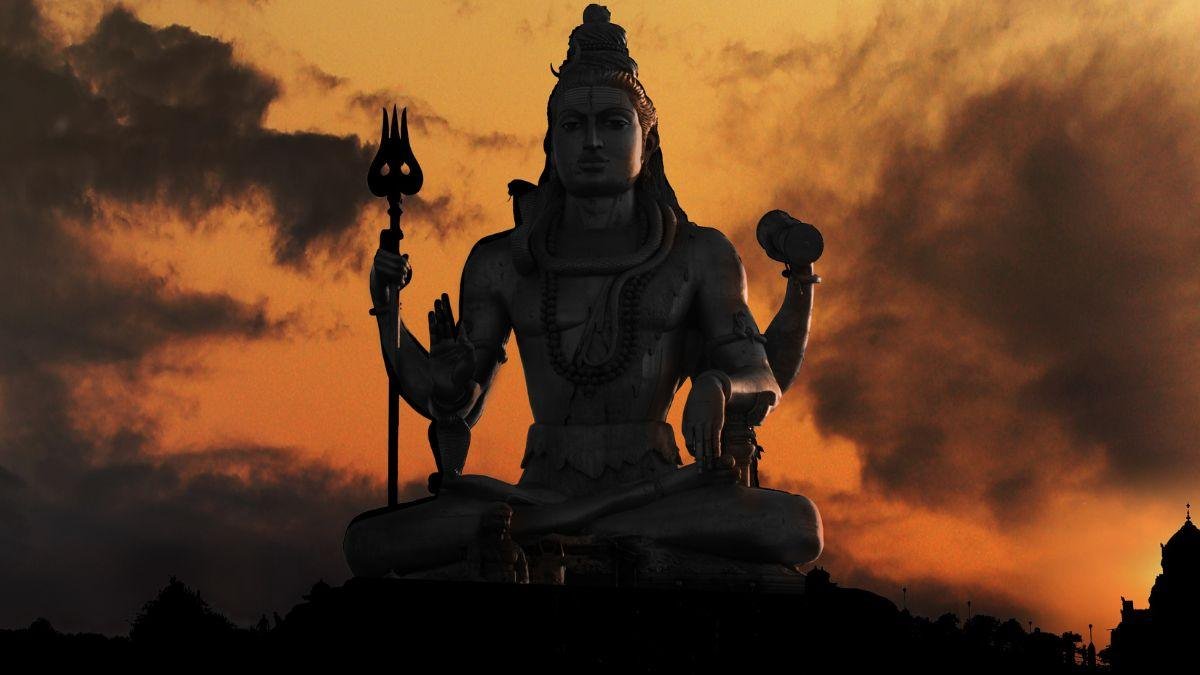Saavan, also known as Shravan or Sawan, holds immense importance in the Hindu calendar. This sacred month, usually falling between July and August, is dedicated to Lord Shiva and is celebrated with great zeal and fervor by Hindus worldwide. Saavan is believed to be a time of heightened spiritual energy and devotion, during which devotees engage in various rituals and activities to seek blessings, purification, and fulfillment of their desires. In this article, we will explore the significance of Saavan and the diverse practices and festivities associated with it across different regions.
The Significance of Saavan

The significance of Saavan is deeply rooted in Hindu mythology and cultural beliefs. Here are some key aspects of its importance:
Connection with Lord Shiva: Saavan is dedicated to Lord Shiva, the supreme deity associated with destruction, transformation, and regeneration. According to Hindu mythology, it was during this month that Lord Shiva consumed the poison known as “halahala” that emerged during the churning of the cosmic ocean. To prevent the poison from spreading, Lord Shiva held it in his throat, turning it blue and earning him the name “Neelkanth.” Devotees believe that offering prayers and performing rituals during Saavan can please Lord Shiva and bring his divine blessings.
Monsoon and Agricultural Significance: Saavan is closely associated with the arrival of the monsoon season in India. The monsoon rains are vital for agricultural prosperity as they provide much-needed water for crops. In rural areas, farmers eagerly await the rains during this month as they mark the beginning of the sowing season. The arrival of Saavan is celebrated as a harbinger of abundance and growth in the agricultural sector.
Purification and Spiritual Renewal: Saavan is considered an opportune time for spiritual growth and purification. Devotees believe that engaging in rituals and fasting during this month can cleanse the mind, body, and soul. Fasting on Mondays, in particular, is believed to be highly meritorious and can help in seeking Lord Shiva’s blessings and forgiveness for past wrongdoings. It is believed that observing austerity and abstaining from indulgences during Saavan can lead to spiritual renewal and transformation.
Fulfillment of Desires: Saavan is considered an auspicious time for seeking blessings and fulfilling desires. Devotees believe that sincere prayers and offerings made to Lord Shiva during this month can lead to the fulfillment of their wishes. Many devotees undertake specific vows and make offerings to appease the deity and seek his divine intervention in matters such as health, prosperity, relationships, and overall well-being.
Devotion and Surrender: Saavan is a time when devotees express their deep love and devotion towards Lord Shiva. Through various rituals, pujas, and acts of devotion, they seek to establish a personal connection with the divine. It is believed that sincere devotion and surrender to Lord Shiva during this month can lead to spiritual progress, enlightenment, and the attainment of moksha (liberation).
Rituals and Activities during Saavan

During Saavan, devotees engage in various rituals and activities to express their devotion and seek the blessings of Lord Shiva. Here are some common rituals and activities observed during this auspicious month:
Fasting: Fasting is an integral part of Saavan observances. Devotees often undertake fasts on Mondays, known as “Shravan Somvar Vrat,” where they abstain from consuming food and sometimes even water until sunset. Fasting is believed to purify the mind and body, enhance self-discipline, and create a favorable environment for spiritual growth.
Abhishek: Abhishek is the ritual bathing or pouring of sacred substances over the Shiva Lingam, representing Lord Shiva. Devotees offer holy water, milk, curd, honey, ghee, and other auspicious items while chanting mantras and prayers. This act symbolizes the devotee’s devotion, surrender, and purification.
Visiting Shiva Temples: Devotees visit Shiva temples during Saavan to offer prayers and seek blessings. They often carry offerings like flowers, fruits, coconut, and incense sticks to present to Lord Shiva. Some devotees embark on pilgrimages to famous Shiva temples such as Kashi Vishwanath Temple in Varanasi, Somnath Temple in Gujarat, and Amarnath Cave Temple in Jammu and Kashmir.
Rudra Abhishek: Rudra Abhishek is a special form of worship dedicated to Lord Shiva. It involves the recitation of Vedic mantras and the pouring of sacred substances, such as water, milk, honey, and ghee, over the Shiva Lingam. This ritual is believed to invoke Lord Shiva’s blessings, protection, and fulfillment of devotees’ desires.
Kanwar Yatra: The Kanwar Yatra is a significant pilgrimage that takes place during Saavan. Devotees, known as Kanwariyas, travel to sacred rivers, such as the Ganges or the Saryu, to fetch holy water. They carry decorated bamboo poles called Kanwars on their shoulders as a symbol of their devotion. Kanwariyas often travel long distances chanting religious hymns and perform the ritual of pouring the collected holy water on Shiva Lingams at their local temples.
Devotional Songs and Dance: Saavan is a time of joyous celebrations, and devotees engage in devotional songs, bhajans, and dance performances dedicated to Lord Shiva. The melodious sounds of bhajans and the rhythmic beats of traditional musical instruments fill temples and other religious gatherings. Devotees express their devotion and surrender through these artistic expressions.
Pradosh Vrat: Pradosh Vrat is observed on the 13th day of both the waxing and waning phases of the moon during Saavan. Devotees observe fasts and perform rituals in the evening to seek the blessings of Lord Shiva and Goddess Parvati. Prayers, chants, and the lighting of lamps are an essential part of this vrat.
Reading Scriptures and Spiritual Discourses: Many devotees utilize the holy month of Saavan to deepen their understanding of spiritual texts such as the Shiva Purana, Ramayana, or Bhagavad Gita. They engage in reading and studying these scriptures, participate in spiritual discourses, and engage in discussions to enhance their knowledge and spiritual growth.
Saavan Celebrations in Different Cultures
Saavan celebrations vary across different cultures and regions. Let’s explore some of the unique Saavan festivities observed in various parts of the world:
India:
- Teej Festival: In the northern states of Rajasthan, Punjab, Haryana, and Uttar Pradesh, Teej is celebrated during Saavan. Women dress in colorful traditional attire and observe fasts to seek the well-being of their husbands and marital bliss. Special dance performances, swings, and cultural programs are organized during this festival.
- Nag Panchami: Nag Panchami is observed in many parts of India, especially in Maharashtra, Karnataka, and West Bengal. On this day, devotees worship and offer prayers to Nagas (serpents) seeking protection from snakebites and to ensure fertility and agricultural prosperity.
Nepal:
- Bol Bam Yatra: In Nepal, devotees undertake the Bol Bam Yatra during Saavan. They walk long distances to reach the holy shrines of Pashupatinath in Kathmandu or Muktinath in Mustang. Pilgrims carry water from sacred rivers to offer to Lord Shiva in these temples, and the atmosphere is filled with devotional chants and spiritual fervor.
- Ghode Jatra: Ghode Jatra, meaning the “Horse Racing Festival,” is celebrated in Kathmandu Valley during Saavan. This event features horse races and various cultural activities. It is believed to ward off evil spirits and bring good fortune and protection to the city.
Trinidad and Tobago:
- Sawaan Sangeet Mahotsav: The Hindu community in Trinidad and Tobago celebrates Saavan with the Sawaan Sangeet Mahotsav. This month-long music festival showcases devotional songs, classical music, and cultural performances dedicated to Lord Shiva. It brings together musicians, dancers, and artists who present their talent in honor of the divine.
Bali, Indonesia:
- In Bali, Saavan is celebrated as “Sasih Kapat.” Devotees visit temples and offer prayers to seek blessings and protection from negative influences. They make special offerings, perform traditional dances, and participate in various rituals to express their devotion to Lord Shiva and other deities.
Mauritius:
- The Indo-Mauritian community celebrates Saavan with great enthusiasm. Devotees visit Ganga Talao, a sacred lake in the heart of Mauritius, and take part in processions carrying Kanwars and offering prayers. The celebrations include cultural programs, traditional music, and dance performances dedicated to Lord Shiva.
These are just a few examples of the diverse Saavan celebrations that take place around the world. While the essence of devotion and seeking blessings remains the same, each culture adds its unique flavor and customs to make the festivities vibrant and memorable. The celebrations foster a sense of unity, cultural preservation, and spiritual rejuvenation among the devotees.
Conclusion
In conclusion, Saavan holds immense significance in Hindu culture and is celebrated with great devotion and fervor in various parts of the world. This sacred month dedicated to Lord Shiva is marked by a multitude of rituals, activities, and celebrations that vary across different cultures and regions.
From fasting and Abhishek to temple visits and Kanwar Yatra, devotees express their love, faith, and surrender to Lord Shiva during Saavan. The rituals aim to purify the mind, seek divine blessings, and fulfill desires. The festivities are accompanied by devotional songs, dance performances, and cultural programs that add vibrancy and joy to the celebrations.
Saavan is not only a time of spiritual renewal and personal devotion but also a celebration of agricultural prosperity and the arrival of monsoon rains. The month holds deep cultural and mythological significance, connecting people to their roots, traditions, and shared beliefs.
Whether it is Teej in India, Bol Bam Yatra in Nepal, Sawaan Sangeet Mahotsav in Trinidad and Tobago, or the celebrations in Bali and Mauritius, Saavan unites people across borders in their reverence for Lord Shiva and the expression of their faith.
The beauty of Saavan lies in its ability to foster a sense of unity, cultural preservation, and spiritual rejuvenation. It serves as a reminder of the importance of devotion, gratitude, and seeking divine blessings in one’s life. The rituals and activities during Saavan provide devotees with an opportunity to deepen their connection with the divine, purify their souls, and find solace and fulfillment.
As the auspicious month of Saavan arrives, it brings with it a sense of anticipation, devotion, and celebration. It is a time to embrace the sacredness of the occasion, participate in the rituals with sincerity, and experience the joyous unity that comes from honoring Lord Shiva and seeking his divine grace.



















Add comment